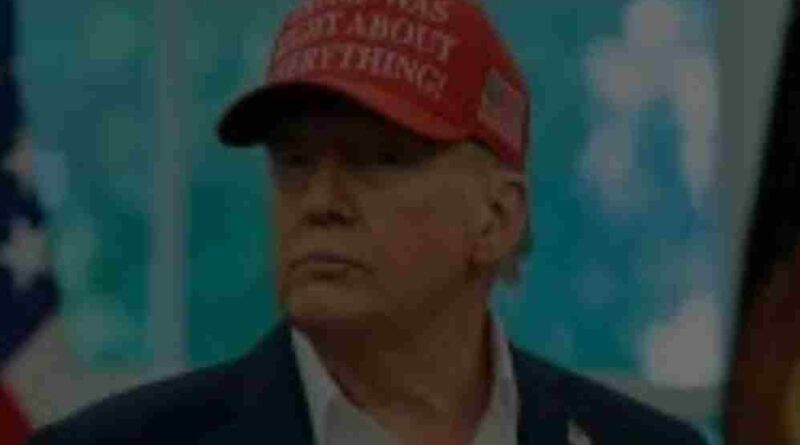“Trump Is Dead” Trends on Social Media: How a Phrase Sparked a Viral Storm
In the age of instant information, rumors don’t just spread—they explode. The latest example came when the phrase “Trump Is Dead” began trending across social media platforms, sending shockwaves through political circles, media outlets, and everyday users alike. What started as a combination of offhand remarks, online speculation, and a touch of meme culture soon spiraled into one of the most bizarre viral moments of the year.
The Trigger: A Comment That Sparked Curiosity
The chain reaction began when Vice President JD Vance made a statement acknowledging that he was “prepared to lead” should anything ever happen to President Trump. While he also emphasized that the President was in good health, the remark was enough to plant a seed of doubt in the public conversation.
In a highly charged political environment, even the smallest suggestion can become magnified. That one comment—meant as reassurance—was reinterpreted as a cryptic sign that something might be wrong. From there, the internet did what it does best: speculate wildly.
The Hashtag Explosion
By the end of the week, the hashtag #TrumpIsDead was trending worldwide. Some users treated it seriously, questioning the President’s health. Others jumped in with jokes, memes, and exaggerated conspiracy theories. For many, it became less about truth and more about being part of a viral moment.
Social media thrives on ambiguity. When people aren’t given a clear explanation for something—such as a leader’s absence from the public eye—it creates the perfect storm for rumors to flourish.
Fuel to the Fire: A Bruise and a Few Silent Days
Adding intensity to the speculation was President Trump’s relative quietness over the past few days. For someone usually visible, vocal, and highly active both in rallies and online, the brief pause in appearances raised eyebrows.
Then came images showing a noticeable bruise on his hand. Without context, these images circulated rapidly, with countless theories attached. Some speculated it was related to medical issues, others insisted it was simply a minor injury. But by that point, facts mattered less than perception.
Official Clarifications
The White House quickly moved to address the situation, explaining that the bruise was caused by a benign condition related to circulation and minor irritation from daily activity. Medical staff noted that aspirin use and frequent handshakes could also cause visible marks.
Despite these reassurances, the online frenzy continued. Once a narrative has taken hold on social media, it often takes more than facts to dismantle it.
The Reality Check: A Public Appearance
By the weekend, speculation came to an abrupt halt when President Trump was seen out in public with his family, heading to his Virginia golf club. Smiling, waving, and visibly active, he appeared far from the grim rumors that had consumed timelines.
This sighting provided the final confirmation that the trending phrase was nothing more than a digital mirage. Yet the damage—and the fascination—was already done.
Meme Culture Meets Political Reality
What makes this episode so striking is not just the false rumor itself but how quickly it became entertainment. Many users online treated the situation less like breaking news and more like a running joke, layering it with memes, cultural references, and exaggerated predictions.
It highlights a growing reality: in the social media era, political figures are not only leaders but also unwilling characters in a never-ending internet narrative.
Why It Went Viral
Several factors explain why the phrase “Trump Is Dead” spread like wildfire:
- Ambiguity of Language: The Vice President’s comments, though routine, left space for interpretation.
- Timing: Trump’s short absence from the spotlight gave the rumor fertile ground.
- Visuals: The bruise photo created a compelling, shareable piece of “evidence.”
- Meme Culture: Many joined in not because they believed it, but because it was trending.
Lessons From the Frenzy
This incident reveals more than just the power of a hashtag. It’s a reminder of how quickly misinformation can take root in an environment where attention is currency. Even in the face of facts and official statements, sensationalism often wins the day.
It also shows the delicate balance leaders face. Too much visibility invites criticism, too little creates suspicion. In this case, a routine remark and a short pause in appearances was all it took to fuel a worldwide viral rumor.
Final Word
Despite the trending chaos, the truth is simple: President Trump is alive, active, and continuing his duties. The phrase “Trump Is Dead” was nothing more than a social media storm, one that reveals more about our culture of virality than about the President’s health.
It’s a sharp reminder that in today’s digital landscape, perception can overtake reality in seconds. And while this rumor has been put to rest, it’s safe to say it won’t be the last time the internet buries someone alive—digitally, at least.
Disclaimer
The information and content shared on digitalgithub.com — including articles, blogs, news, guides, and other resources — is intended for general informational and educational purposes only. We do not guarantee the completeness, reliability, or suitability of any information. Always seek the guidance of a qualified professional before making decisions based on the information you read. Use this site at your own risk.

